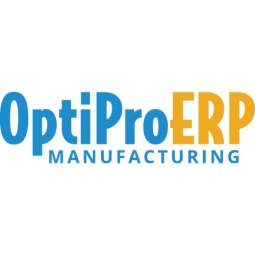下载PDF
Qvella's Transition to Full-Scale Production with OptiProERP
技术
- 功能应用 - 企业资源规划系统 (ERP)
- 平台即服务 (PaaS) - 设备管理平台
适用行业
- 电子产品
- 医疗保健和医院
用例
- 添加剂制造
- 制造过程模拟
服务
- 系统集成
挑战
Qvella Corp. 是一家快速发展的医疗器械公司,正处于从测试阶段过渡到全面商业生产的边缘。然而,他们缺乏可以帮助他们有效扩展的企业资源规划 (ERP) 系统。他们的运营受到严格监管且任务关键,需要细致的记录和可追溯性。这些流程需要一个具有强大功能的系统。该公司开发了快速检测直接血液样本中传染源的技术,旨在缩短诊断时间、降低成本并最终挽救生命。因此,他们需要一个能够在 ISO13485 环境下满足 FDA 和 MDSAP 等所有监管标准的 ERP 系统。
关于客户
Qvella Corp. 是一家快速发展的医疗器械公司,该公司开发出能够快速检测直接血液样本中感染因子的技术。该公司致力于缩短诊断时间并降低成本,以挽救生命。当他们从测试版过渡到全面商业生产时,他们需要一个能够满足医疗器械行业严格监管标准的 ERP 系统,例如 ISO13485 环境中的 FDA 和 MDSAP。管理团队以前都使用过 ERP 系统,他们正在寻找一个用户友好且功能强大的系统来管理他们的高速增长和最终成功。
解决方案
在评估了包括 Acumatica 在内的多个 ERP 系统后,Qvella 选择了 OptiProERP 和 SAP Business One。其他系统无法满足 OptiProERP 提供的先进制造功能。 Qvella 经验丰富的管理团队都曾有过 ERP 系统的使用经验,他们发现 OptiProERP 易于使用,并赞赏其开箱即用的功能。他们相信该系统能够应对他们的所有挑战。 OptiProERP 花时间了解 Qvella 的业务并提供了一支知识渊博的实施团队。该系统现在为 Qvella 提供了运营基础,这对于管理其高增长和最终成功至关重要。它为 Qvella 提供其行业所需的关键报告,并满足其完整的业务管理需求。
运营影响
相关案例.

Case Study
Remote Temperature Monitoring of Perishable Goods Saves Money
RMONI was facing temperature monitoring challenges in a cold chain business. A cold chain must be established and maintained to ensure goods have been properly refrigerated during every step of the process, making temperature monitoring a critical business function. Manual registration practice can be very costly, labor intensive and prone to mistakes.

Case Study
Hospital Inventory Management
The hospital supply chain team is responsible for ensuring that the right medical supplies are readily available to clinicians when and where needed, and to do so in the most efficient manner possible. However, many of the systems and processes in use at the cancer center for supply chain management were not best suited to support these goals. Barcoding technology, a commonly used method for inventory management of medical supplies, is labor intensive, time consuming, does not provide real-time visibility into inventory levels and can be prone to error. Consequently, the lack of accurate and real-time visibility into inventory levels across multiple supply rooms in multiple hospital facilities creates additional inefficiency in the system causing over-ordering, hoarding, and wasted supplies. Other sources of waste and cost were also identified as candidates for improvement. Existing systems and processes did not provide adequate security for high-cost inventory within the hospital, which was another driver of cost. A lack of visibility into expiration dates for supplies resulted in supplies being wasted due to past expiry dates. Storage of supplies was also a key consideration given the location of the cancer center’s facilities in a dense urban setting, where space is always at a premium. In order to address the challenges outlined above, the hospital sought a solution that would provide real-time inventory information with high levels of accuracy, reduce the level of manual effort required and enable data driven decision making to ensure that the right supplies were readily available to clinicians in the right location at the right time.

Case Study
Gas Pipeline Monitoring System for Hospitals
This system integrator focuses on providing centralized gas pipeline monitoring systems for hospitals. The service they provide makes it possible for hospitals to reduce both maintenance and labor costs. Since hospitals may not have an existing network suitable for this type of system, GPRS communication provides an easy and ready-to-use solution for remote, distributed monitoring systems System Requirements - GPRS communication - Seamless connection with SCADA software - Simple, front-end control capability - Expandable I/O channels - Combine AI, DI, and DO channels

Case Study
Driving Digital Transformations for Vitro Diagnostic Medical Devices
Diagnostic devices play a vital role in helping to improve healthcare delivery. In fact, an estimated 60 percent of the world’s medical decisions are made with support from in vitrodiagnostics (IVD) solutions, such as those provided by Roche Diagnostics, an industry leader. As the demand for medical diagnostic services grows rapidly in hospitals and clinics across China, so does the market for IVD solutions. In addition, the typically high cost of these diagnostic devices means that comprehensive post-sales services are needed. Wanteed to improve three portions of thr IVD:1. Remotely monitor and manage IVD devices as fixed assets.2. Optimizing device availability with predictive maintenance.3. Recommending the best IVD solution for a customer’s needs.







